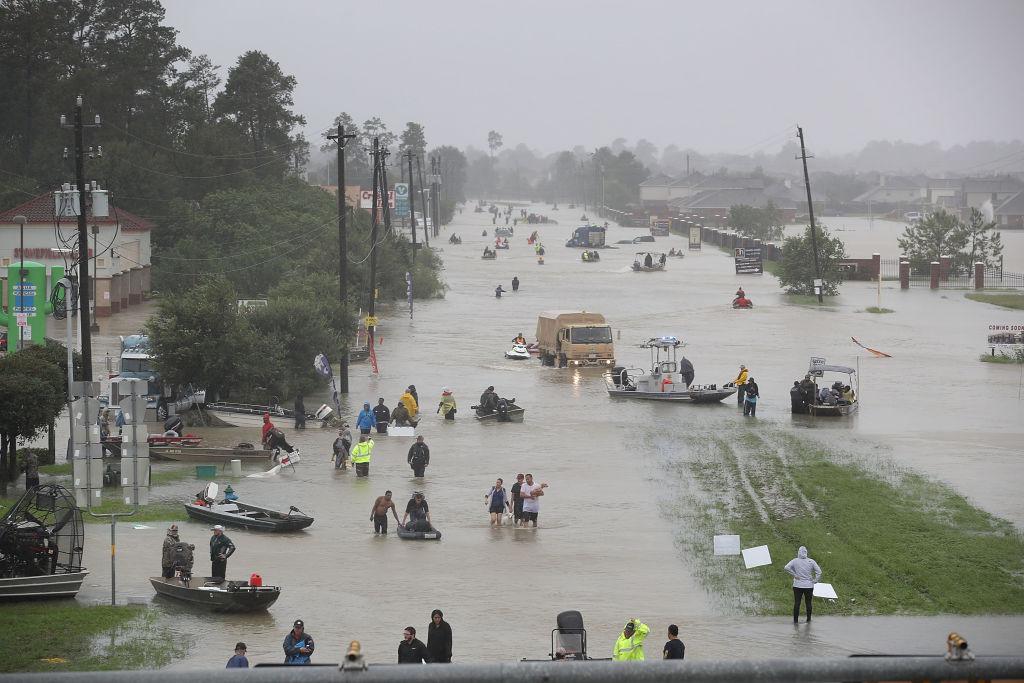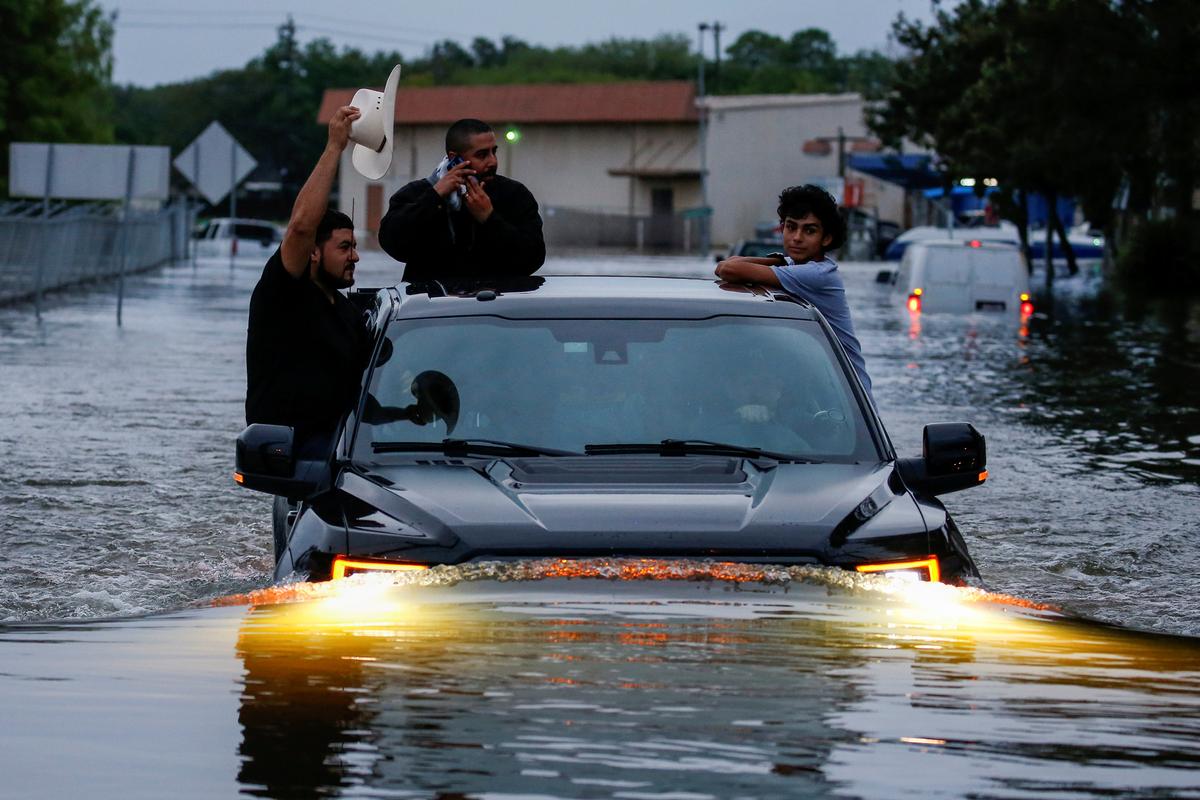A woman living near lake Olympia in Texas has filmed two alligators swimming in her backyard that was flooded from Hurricane-come-Tropical Storm Harvey.
Arlene Kelsch posted the video on Facebook on Sunday. In the footage, one alligator can be seen swimming near a fence. As the camera pans, a second alligator is seen swimming not far from the patio.
“I was still dealing with the fact that my backyard is filled with water, so many inches of rain dropped in only hours, so I was concerned,” Kelsch told Metro.
“Then, I see many tiny turtles, cuties swimming about. Sweet, right? Then I realize the piece of wood isn’t water, it’s a gator!”
The woman kept an eye on the giant reptile for about an hour. She discovered the second alligator when she came back to check on the first one.
“When I went to check on him, I saw he was closer to the house, but it turns out it wasn’t him, it was a second gator. I swear to God it was eyeballing me through the window!” she said.
Alligators weren’t the only invaders, Kelsch said. She also had a frog jump out at her from the fireplace.
“We have seen some snakes. That’s really what I am keeping an eye out for inside my house! Residents here in Lake Olympia will have sightings in the spring of baby alligators, but never inside our backyards,” Kelsch told Chron.

Houston is facing worsening historic flooding in the coming days as Tropical Storm Harvey dumps more rain on the city, swelling rivers to record levels and forcing federal engineers on Monday, Aug. 28, to release water from area reservoirs in hopes of controlling the rushing currents.
Harvey was the most powerful hurricane to strike Texas in more than 50 years when it came ashore on Friday near Corpus Christi, about 220 miles south of Houston. It is responsible for at least two deaths. It has since lingered around Texas’s Gulf Coast, where it is forecast to remain for several more days, drenching parts of the region with a year’s worth of rain in the span of a week.
Rains have submerged cars and turned freeways into rivers, with more flooding expected when the storm shifts back in the direction of Houston. Harvey’s center was 90 miles southwest of Houston on Monday morning and forecast to arc slowly toward the city through Wednesday, with the worst floods expected later that day and on Thursday.

Schools, airports, and office buildings in the nation’s fourth largest city were shut on Monday as chest-high water filled some neighborhoods in the low-lying city that is home to about 2.3 million people.
The metropolitan area, home to 6.8 million people, also is the nation’s refining and petrochemical hub, which has been crippled by the storm. Numerous refiners shut operations, likely for weeks.
Torrential rain also hit areas more than 150 miles away, swelling rivers upstream and causing a surge that was heading toward the Houston area, where numerous rivers and streams have already been breached. Some areas have already seen as much as 30 inches of rain, according to the National Weather Service.
By the end of the week in some Texas coastal areas the total precipitation could reach 50 inches, which is the average rainfall for an entire year, forecasters said.
Harvey is expected to produce an additional 15 to 25 inches of rain through Friday on the upper Texas coast and into southwestern Louisiana, the National Hurricane Center said.
Reuters contributed to this report.
From NTD.tv




